This site uses cookies as defined in our Cookie Policy, by continuing to use this site you agree to their use.
Continue
| Arrive | Depart | ||||||
| 27th27 | OctOct | 202626 | Civitavecchia, Italy, embark on the Emerald Azzurra | ||||
Italy's vibrant capital lives in the present, but no other city on earth evokes its past so powerfully. For over 2,500 years, emperors, popes, artists, and common citizens have left their mark here. Archaeological remains from ancient Rome, art-stuffed churches, and the treasures of Vatican City vie for your attention, but Rome is also a wonderful place to practice the Italian-perfected il dolce far niente, the sweet art of idleness. Your most memorable experiences may include sitting at a caffè in the Campo de' Fiori or strolling in a beguiling piazza. Your unforgettable cruise begins in Civitavecchia, an important seaport which traces its origins back to the 2nd century AD and gateway to the historic metropolis of Rome. Here, you’ll be transferred to your Emerald Cruises luxury yacht for the start of your voyage along the Italian coastline. Please book your flight to arrive into Rome prior to 01:00 PM. Docked: 18:00 | |||||||
| 28th28 | OctOct | 202626 | Livorno, Italy | ||||
Livorno is a gritty city with a long and interesting history. In the early Middle Ages it alternately belonged to Pisa and Genoa. In 1421 Florence, seeking access to the sea, bought it. Cosimo I (1519–74) started construction of the harbor in 1571, putting Livorno on the map. After Ferdinando I de' Medici (1549–1609) proclaimed Livorno a free city, it became a haven for people suffering from religious persecution; Roman Catholics from England and Jews and Moors from Spain and Portugal, among others, settled here. The Quattro Mori (Four Moors), also known as the Monument to Ferdinando I, commemorates this. (The statue of Ferdinando I dates from 1595, the bronze Moors by Pietro Tacca from the 1620s.)In the following centuries, and particularly in the 18th, Livorno boomed as a port. In the 19th century the town drew a host of famous Britons passing through on their grand tours. Its prominence continued up to World War II, when it was heavily bombed. Much of the town's architecture, therefore, postdates the war, and it's somewhat difficult to imagine what it might have looked like before. Livorno has recovered from the war, however, as it's become a huge point of departure for container ships, as well as the only spot in Tuscany for cruise ships to dock for the day.Most of Livorno's artistic treasures date from the 17th century and aren't all that interesting unless you dote on obscure baroque artists. Livorno's most famous native artist, Amedeo Modigliani (1884–1920), was of much more recent vintage. Sadly, there's no notable work by him in his hometown.There may not be much in the way of art, but it's still worth strolling around the city. The Mercato Nuovo, which has been around since 1894, sells all sorts of fruits, vegetables, grains, meat, and fish. Outdoor markets nearby are also chock-full of local color. The presence of Camp Darby, an American military base just outside town, accounts for the availability of many American products.If you have time, Livorno is worth a stop for lunch or dinner at the very least. Your first stop is Livorno, a coastal city imbued with a rich history, having been established in the 16th century under the rule of the Medici family. Livorno is renowned for its unique architectural style, which mixes elements of both Italian Renaissance and Baroque design. One of the most notable examples is evident at the Cathedral of Saint Francis. which was built in the 17th century. This Tuscan city is also home to several museums and galleries, including the Museo Civico Giovanni Fattori, which features works by the Italian painter of the same name. DiscoverMORE DiscoverMORE Docked: 09:00 - 19:00 | |||||||
| 29th29 | OctOct | 202626 | Ajaccio, Corsica, France | ||||
Considered Corsica’s primary commercial and cultural hub, the largest city and regional capital of Ajaccio is situated on the west coast of the island, approximately 644 km (400 miles) southeast of Marseille, France. Founded in 1492, vestiges of ancient Corsica in this ville impériale revolve around the city’s most famous son, Napoléon Bonaparte, whose family home—now the national museum Maison Bonaparte—pays tribute to the emperor’s historical influence.Remnants from what was originally a 12th-century Genoese colony are still visible around the Old Town near the imposing citadel and watchtower. Perfect for exploring, the luminous seaside city surrounded by snowcapped mountains and pretty beaches offers numerous sites, eateries, side streets, and a popular harbor, where sailboats and fishing vessels moor in the picturesque Tino Rossi port lined with well-established restaurants and cafés serving fresh local fare. The capital of Corsica and Napoleon Bonaparte’s birthplace, Ajaccio welcomes as a thriving Mediterranean resort where rich historic and cultural heritage merges with the dazzling natural beauty of the surrounding landscapes. This is the perfect destination for beach lovers and nature enthusiasts. The pristine shoreline features exquisite powder sand coves and serene turquoise waters, while rugged red porphyry islands bordering the coast are backed by imposing snow-capped mountains. DiscoverMORE DiscoverMORE Docked: 12:00 - 18:00 | |||||||
| 30th30 | OctOct | 202626 | At Sea | ||||
| 31st31 | OctOct | 202626 | Palma de Mallorca, Spain | ||||
If you look north of the cathedral (La Seu, or the seat of the bishopric, to Mallorcans) on a map of the city of Palma, you can see around the Plaça Santa Eulàlia a jumble of tiny streets that made up the earliest settlement. Farther out, a ring of wide boulevards traces the fortifications built by the Moors to defend the larger city that emerged by the 12th century. The zigzags mark the bastions that jutted out at regular intervals. By the end of the 19th century, most of the walls had been demolished; the only place where you can still see the massive defenses is at Ses Voltes, along the seafront west of the cathedral.A torrent (streambed) used to run through the middle of the old city, dry for most of the year but often a raging flood in the rainy season. In the 17th century it was diverted to the east, along the moat that ran outside the city walls. Two of Palma's main arteries, La Rambla and the Passeig d'es Born, now follow the stream's natural course. The traditional evening paseo (promenade) takes place on the Born.If you come to Palma by car, park in the garage beneath the Parc de la Mar (the ramp is just off the highway from the airport, as you reach the cathedral) and stroll along the park. Beside it run the huge bastions guarding the Almudaina Palace; the cathedral, golden and massive, rises beyond. Where you exit the garage, there's a ceramic mural by the late Catalan artist and Mallorca resident Joan Miró, facing the cathedral across the pool that runs the length of the park.If you begin early enough, a walk along the ramparts at Ses Voltes from the mirador beside the cathedral is spectacular. The first rays of the sun turn the upper pinnacles of La Seu bright gold and then begin to work their way down the sandstone walls. From the Parc de la Mar, follow Avinguda Antoni Maura past the steps to the palace. Just below the Plaça de la Reina, where the Passeig d'es Born begins, turn left on Carrer de la Boteria into the Plaça de la Llotja (if the Llotja itself is open, don't miss a chance to visit—it's the Mediterranean's finest Gothic-style civic building). From there stroll through the Plaça Drassana to the Museu d'Es Baluard, at the end of Carrer Sant Pere. Retrace your steps to Avinguda Antoni Maura. Walk up the Passeig d'es Born to Plaça Joan Carles I, then right on Avenida de La Unió. On the beautiful island of Majorca and the capital of Spain's Balearic Islands, Palma de Mallorca is a city steeped in history brimming with remarkable architecture. One of Palma's most notable landmarks is the stunning Cathedral of Santa Maria, which overlooks the Bay of Palma. Dating back to the 13th century, this masterpiece of Gothic architecture boasts one of the largest rose windows — a decorated circular window with stained glass — in the world. Today choose between our Included Excursion or EmeraldACTIVE option. Included Excursion EmeraldACTIVE Docked: 08:00 - 15:00 | |||||||
| 1st01 | NovNov | 202626 | Cartagena, Spain | ||||
A Mediterranean city and naval station located in the Region of Murcia, southeastern Spain, Cartagena’s sheltered bay has attracted sailors for centuries. The Carthaginians founded the city in 223BC and named it Cartago Nova; it later became a prosperous Roman colony, and a Byzantine trading centre. The city has been the main Spanish Mediterranean naval base since the reign of King Philip II, and is still surrounded by walls built during this period. Cartagena’s importance grew with the arrival of the Spanish Bourbons in the 18th century, when the Navidad Fortress was constructed to protect the harbour. In recent years, traces of the city’s fascinating past have been brought to light: a well-preserved Roman Theatre was discovered in 1988, and this has now been restored and opened to the public. During your free time, you may like to take a mini-cruise around Cartagena's historic harbour: these operate several times a day, take approximately 40 minutes and do not need to be booked in advance. Full details will be available at the port. As a major naval station on the Mediterranean coast, Cartagena has been greatly influenced by various cultures over the centuries. This historical crossroads of civilisations is evident in this Spanish city's diverse architectural styles, from the Roman era to Art Nouveau. A must-see landmark is the ancient Roman Theatre, unearthed in 1987 and restored for public viewing. EmeraldPLUS Docked: 13:00 - 18:00 | |||||||
| 2nd02 | NovNov | 202626 | Málaga, Spain | ||||
As you sail into Malaga you will notice what an idyllic setting the city enjoys on the famous Costa del Sol. To the east of this provincial capital, the coast along the region of La Axarqua is scattered with villages, farmland and sleepy fishing hamlets - the epitome of traditional rural Spain. To the west stretches a continuous city where the razzmatazz and bustle creates a colourful contrast that is easily recognisable as the Costa del Sol. Surrounding the region, the Penibéetica Mountains provide an attractive backdrop overlooking the lower terraced slopes which yield olives and almonds. This spectacular mountain chain shelters the province from cold northerly winds, giving it a reputation as a therapeutic and exotic place in which to escape from cold northern climes. Malaga is also the gateway to many of Andalusia's enchanting historic villages, towns and cities. Málaga was founded by the Phoenicians and has been under the rule of various civilisations down the ages, including the Romans and Moors, each having left their mark on the city's culture and architecture. Several historical sites and landmarks to discover in this popular Andalusian port city include the Alcazaba, a Moorish fortress overlooking the city, and nearby Roman Theatre. DiscoverMORE Docked: 14:00 - 21:00 | |||||||
| 3rd03 | NovNov | 202626 | Tangier, Morocco | ||||
Tangier can trace its origins back to the Phoenicians and ancient Greeks. It was named after Tinge, the mother of Hercules’ son, and its beginnings are embedded in mythology. It was subsequently a Roman province, and after Vandal and Byzantine influences, was occupied by the Arabs with Spain, Portugal, France and England also playing a part in the city’s history. With such a diverse past it is perhaps not surprising that Tangier is such an individual city. Overlooking the Straits of Gibraltar, the city lies on a bay between two promontories. With its old Kasbah, panoramic views, elegant buildings, squares and places of interest, there is much to discover in both the new and old parts of the city. Guarding the slender Strait of Gibraltar, Tangier has been Europe's gateway to Africa for centuries, welcoming with a blend of exotic cultures and influences unique to Morocco. Built on the slopes of a chalky limestone hill, the Old Town, filled with narrow streets and houses displaying eclectic styles, is dominated by the Kasbah, the former Sultan's Palace, now a museum of Moroccan art and the Great Mosque – all must-see attractions. DiscoverMORE Docked: 08:00 - 13:00 | |||||||
| 3rd03 | NovNov | 202626 | Seville, Spain | ||||
Whether you pronounce it Seville or Sevilla, this gorgeous Spanish town is most certainly the stuff of dreams. Over 2,200 years old, Seville has a mutli-layered personality; home to Flamenco, high temperatures and three UNESCO-World Heritage Sites, there is a noble ancestry to the southern Spanish town. Not forgetting that it is the birthplace of painter Diego Velazquez, the resting place of Christopher Columbus, the inspiration for Bizet’s Carmen and a location for Game of Thrones filming, Seville is truly more than just a sum of its parts. This city is a full on experience, a beguiling labyrinth of centuries old streets, tiny tapas restaurants serving possibly the best dishes you’ll taste south of Madrid and a paradise of Mudejar architecture and tranquil palm trees and fountain-filled gardens. | |||||||
| 4th04 | NovNov | 202626 | Seville, Spain | ||||
Whether you pronounce it Seville or Sevilla, this gorgeous Spanish town is most certainly the stuff of dreams. Over 2,200 years old, Seville has a mutli-layered personality; home to Flamenco, high temperatures and three UNESCO-World Heritage Sites, there is a noble ancestry to the southern Spanish town. Not forgetting that it is the birthplace of painter Diego Velazquez, the resting place of Christopher Columbus, the inspiration for Bizet’s Carmen and a location for Game of Thrones filming, Seville is truly more than just a sum of its parts. This city is a full on experience, a beguiling labyrinth of centuries old streets, tiny tapas restaurants serving possibly the best dishes you’ll taste south of Madrid and a paradise of Mudejar architecture and tranquil palm trees and fountain-filled gardens. Located in the valley of the Guadalquivir River, Seville is the stunning capital city of Andalusia and birthplace of Flamenco. DiscoverMORE Docked: 12:00 - 12:00 (next day) | |||||||
| 5th05 | NovNov | 202626 | Seville, Spain | ||||
Whether you pronounce it Seville or Sevilla, this gorgeous Spanish town is most certainly the stuff of dreams. Over 2,200 years old, Seville has a mutli-layered personality; home to Flamenco, high temperatures and three UNESCO-World Heritage Sites, there is a noble ancestry to the southern Spanish town. Not forgetting that it is the birthplace of painter Diego Velazquez, the resting place of Christopher Columbus, the inspiration for Bizet’s Carmen and a location for Game of Thrones filming, Seville is truly more than just a sum of its parts. This city is a full on experience, a beguiling labyrinth of centuries old streets, tiny tapas restaurants serving possibly the best dishes you’ll taste south of Madrid and a paradise of Mudejar architecture and tranquil palm trees and fountain-filled gardens. Seville was an important harbour during the Spanish conquest of the American continent, nowadays, Seville is famous worldwide for its culture, monuments, traditions and artistic heritage. Docked: Overnight - 12:00 | |||||||
| 6th06 | NovNov | 202626 | Lisbon, Portugal | ||||
Set on seven hills on the banks of the River Tagus, Lisbon has been the capital of Portugal since the 13th century. It is a city famous for its majestic architecture, old wooden trams, Moorish features and more than twenty centuries of history. Following disastrous earthquakes in the 18th century, Lisbon was rebuilt by the Marques de Pombal who created an elegant city with wide boulevards and a great riverfront and square, Praça do Comércio. Today there are distinct modern and ancient sections, combining great shopping with culture and sightseeing in the Old Town, built on the city's terraced hillsides. The distance between the ship and your tour vehicle may vary. This distance is not included in the excursion grades. Capital city of Portugal, Lisbon is a vibrant and charming destination known for its scenic beauty, rich history, and lively culture. The city is situated on the hilly banks of the Tagus River, offering stunning panoramic views and a picturesque waterfront. Its architecture reflects a mix of influences, including Romanesque, Gothic, Manueline, Baroque, and Moorish styles, creating a unique and diverse urban landscape. Included Excursion Docked: 15:00 - Overnight | |||||||
| 7th07 | NovNov | 202626 | Lisbon, Portugal, disembark the Emerald Azzurra | ||||
Set on seven hills on the banks of the River Tagus, Lisbon has been the capital of Portugal since the 13th century. It is a city famous for its majestic architecture, old wooden trams, Moorish features and more than twenty centuries of history. Following disastrous earthquakes in the 18th century, Lisbon was rebuilt by the Marques de Pombal who created an elegant city with wide boulevards and a great riverfront and square, Praça do Comércio. Today there are distinct modern and ancient sections, combining great shopping with culture and sightseeing in the Old Town, built on the city's terraced hillsides. The distance between the ship and your tour vehicle may vary. This distance is not included in the excursion grades. Your luxurious yacht cruise concludes here in Portugal’s hillside capital city, where you’ll be transferred to the airport for your return flight home or to continue your holiday. Please book your flight to depart out of Lisbon after 11:00 AM. Docked: 08:00 *Please verify with the Shore Excursion Manager onboard whether a DiscoverMORE tour is available on disembarkation day. The itinerary is a guide only and may be amended for operational reasons. As such Emerald Cruises cannot guarantee the cruise will operated unaltered from the itinerary states above. Please refer to our terms and conditions for further information. | |||||||
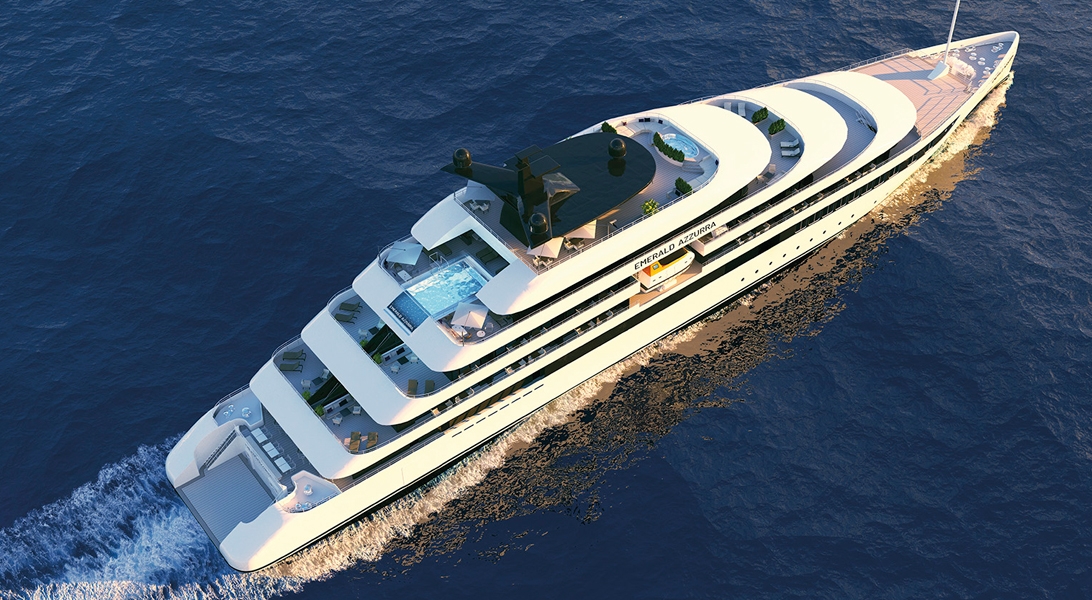
The images shown are for illustration purposes only and may not be an exact representation of what you find on the ship.
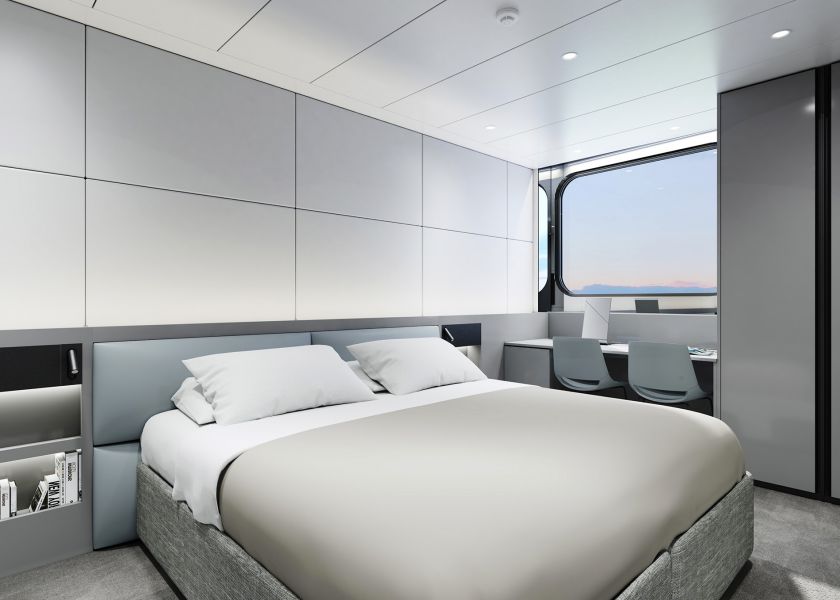
Situated on the Emerald Deck, towards the front of the yacht, our Oceanview Staterooms are bigger than the average standard, offering excellent value for money.

Our oversized Owner’s Suites are the largest and most opulent, located on the Pool Deck. Boasting a separate bedroom and lounge area, you’ll also enjoy your large private terrace, from which to admire the stunning views of each port you visit.
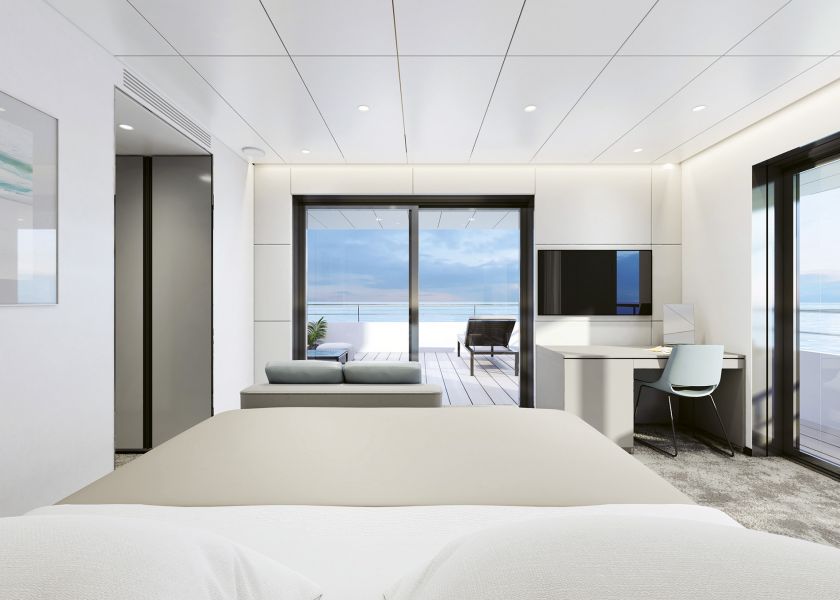
Our spacious Terrace Suites take pride of place at the back of the Panorama Deck and come complete with a large private terrace, pillow menu and the option to have two items laundered daily, perfect for preparing your wardrobe for a special occasion.
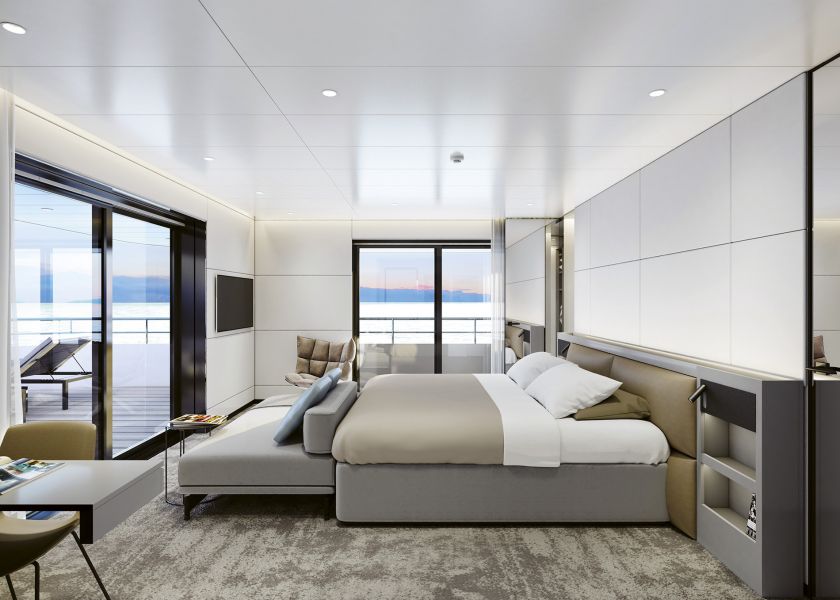
Positioned at the back of the Observation Deck, you’ll be treated to sensational ocean and coastal views from your own private terrace. You’ll also receive a number of luxury inclusions to help you make the most of your time in your Yacht Suite.
The images shown are for illustration purposes only and may not be an exact representation of what you find on the ship.
The images shown are for illustration purposes only and may not be an exact representation of what you find on the ship.
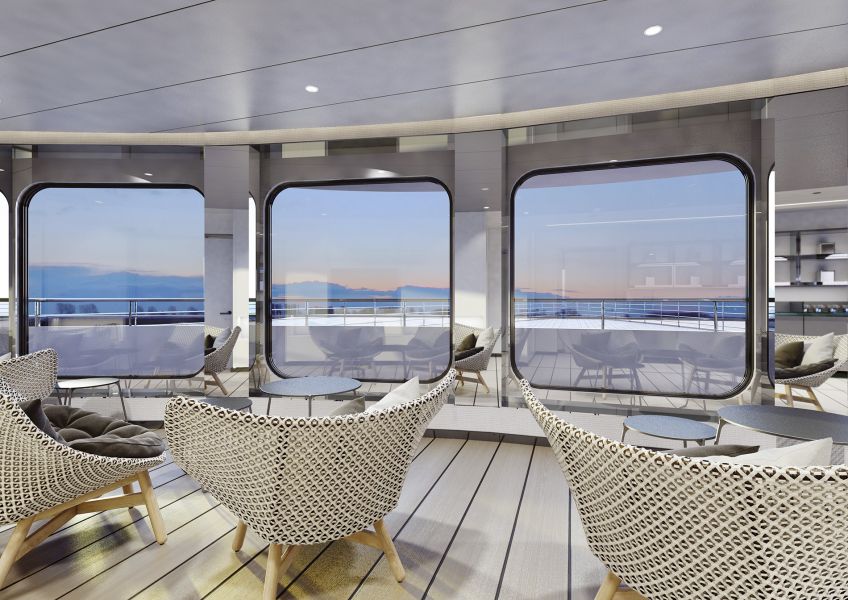
Head to the Observation Deck area for spectacular views or a morning yoga session. In the Observation Lounge, sit back and relax with a good book or play a game of chess.
The images shown are for illustration purposes only and may not be an exact representation of what you find on the ship.
The images shown are for illustration purposes only and may not be an exact representation of what you find on the ship.
| Return flights including luggage allowance | |||
| Overseas Transfers | |||
| 11 nights aboard the Emerald Azzurra | |||
| Return airport transfers | |||
| Wine, beer & soft drinks with lunch & dinner | |||
| Gratuities Included | |||
| One complimentary shore excursion in every port | |||
| Bikes for passenger use | |||
| Free Wi-Fi included | |||
| Port Taxes and Fees | |||
 | ABTA and ATOL Protection* | ||
Fly/cruise package |
Date 27th Oct 2026 |
Nts 11 |
Interior  |
Oceanview £6,975pp |
Balcony  |
Suite £9,016pp |
Interior  |
Oceanview £13,950pp |
Balcony  |
Suite £15,991pp |
Date 27th Oct 2026 |
Nts 11 |
Interior  |
Oceanview £6,975pp |
Balcony  |
Suite £9,016pp |
Interior  |
Oceanview £13,950pp |
Balcony  |
Suite £15,991pp |




Fusion Cruises when selling travel arrangements is a trading name of The Midcounties Co-operative Ltd. Fusion Cruises is an Accredited Body Member of Midcounties Co-operative Travel Consortium. (ABTA:P6652, ATOL:6053).
Book with Confidence. We are a Member of ABTA which means you have the benefit of ABTA’s assistance and Code of Conduct.
Some of the flights and flight-inclusive holidays on this website are financially protected by the ATOL scheme but ATOL protection does not apply to all holiday and travel services offered on this website. This website will provide you with information on the protection that applies in the case of each holiday and travel service offered before you make your booking. If you do not receive an ATOL Certificate then the booking will not be ATOL protected. If you do receive an ATOL Certificate but all parts of your trip are not listed on it, those parts will not be ATOL protected. Please see our booking conditions for information, or for more information about financial protection and the ATOL Certificate go to: www.caa.co.uk
